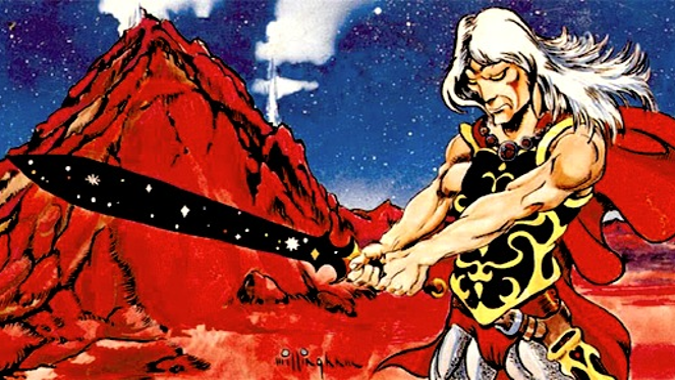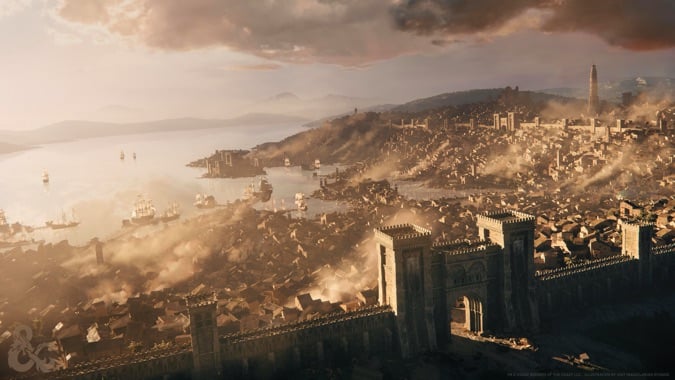Tips for starting your first TTRPG campaign

I remember when I decided to start my first Dungeons and Dragons game as a DM, and found about a month into it that I’d accidentally created my own campaign world. Like many DMs, I started off running premade adventures, and to this day I sometimes make use of them — if I had only one piece of advice to give to a new DM, it would be to at least read new published adventures and get a sense of what’s being published, how adventures are being structured. But they’re also great to give you a springboard. Designing a dungeon or cave and populating it with a balanced series of fights for a party can be a ton of work, and it’s nice to be able to offload some of that work sometimes.
But eventually, as a DM, you’ll need to run stuff that isn’t just fighting. You’ll need places for the party to go to resupply and heal up, familiar faces to get adventures from, recurring villains — in short, you’ll need a world for them to be adventuring in, and that world becomes your campaign — the place where all the adventures happen, where all the friends and enemies and strangers your players’ party will encounter live. And the first time you set out and realize you’re in the middle of creating this world can be pretty stressful, but it doesn’t have to be.
So here’s some advice for how to get started on your first campaign.

There’s no shame in using someone else’s world
I was militantly opposed to running my first game in a published setting like Faerun or Greyhawk my first time out, and frankly, that meant I had to do a ton of work to change where the modules were set, come up with new towns, new cities, nations, all that kind of thing. And sure, that’s great and all, but I didn’t have to do that. It made things a lot harder at the exact moment I was still learning the ropes.
Even if you decide you want to create your own world, there’s absolutely nothing wrong with reading the various settings that you can find and thinking about why and how they are the way they are, and what you can learn from them. Do you like how Faerun is a sprawling, massive continent filled with lost ruins and a wide variety of cities and towns, or are you more inspired by Athas and its deserts and dune seas? Is Eberron’s magicpunk setting with elemental powered trains and airships and its decidedly pulp aesthetic interesting to you? Feel free to lift whole cities from these settings — you can have Neverwinter from Faerun, Tyr from Athas, and Cauldron from the Shackled City adventure path all exist in your new setting, along with those magic trains from Eberron. You’re not even required to file the serial numbers off and change the names — although you absolutely can if you want to.
This use is what all of these published materials are for — they exist to be used, to be cannibalized and combined in new ways. They exist to give you and your players fodder for your own games. Absolutely never hesitate to do so or feel like it’s less ‘real’ to use them. And don’t think you have to stop at published campaign settings — we have advice on how to use movies, TV and video games to shape and inspire your campaign settings as well.

Start small and worldbuild from there
If you’ve decided, like I did, to make everything yourself and be the sole creator of your upcoming campaign world, my most important piece of advice for you is to start small. Don’t build an enormous world and populate it with kingdoms and empires — it’s fine to have a few names to throw around, but for the most part, I’d suggest that you start in a single town or village, at the most a reasonable city, and give yourself room to build out from there as your players gain in experience.
The reason for this is twofold. First, you have no idea what your players are going to want to do, and it’s helpful to have options. If one of your players wants to play a Dwarf Barbarian from a wintery northland of mountains and fjords, it’s helpful to be able to put said wintery northland fairly close to the pastoral village your party Sorcerer wants to be from, and of course you want there to be enough wilderness around for the Ranger to feel comfortable with. This lets your players have a stake in the world, as their decisions directly impact it, which is really useful when starting out. The second reason is because you’ll have ideas as you run the game, and it’s a lot easier to execute those ideas if you haven’t already decided, and told your players, something utterly contradictory.
Plus, there’s a real great feeling of discovery when your players decide to go ‘off the map’ and you get to unveil the entirely new places you just made for them to explore. One of the best feelings as a DM is when you start off at level 1 in a small farming village trying to figure out why Kobolds are stealing chickens and by the end of the campaign your party are standing atop the Mountain That Moves, having slain Dulkarnizein the Two-Horned One and prevented the destruction of all Lorizar, after an epic journey across a world that they helped you create with their decisions.

Don’t be in a hurry
Don’t feel like you have to rush the party, or take them to an entirely new place just because you designed it. I still remember fondly the campaign I ran that ended up spending almost all of its year and a half of weekly D&D sessions in the small town of Gavan’s Gap, in the mountain pass between the nation of Aghat and the Duchy of Null. I’d intended the group to go to Null and find adventure there — Null was a barely reskinned version of Lankhmar from Fritz Leiber’s Fafhrd and the Grey Mouser stories — but the players, for whatever reason, decided to stay in Gavan’s Gap, helping the Lady Mayor out, and the next thing I knew they’d built the place up into an fortified trading center and dealt with intrigue and rival factions as well as a cult of brain eaters who worshipped the Mind Flayers.
There was an entire world I’d designed — I had maps, I had whole continents ready to be explored — and there was never really any reason to. The party found plenty of trouble in Gavan’s Gap, they explored the nearby ruins of the ancient Goblin Empire, they fought with the Etriad and made peace with an ancient Archlich who used to be a terrible force of evil but who they convinced would be less bothered by treasure hunter adventurers if he let them just take all of that gold and magic that he really didn’t need and wasn’t using anyway. They went to Null a few times and had some adventures there, sure, but in the end most of that campaign was based around the Gap, and the last session was an overview of all the changes they’d made and the fortunes they’d improved for the people there.
Remember, always, the whole point of a campaign is to give your players somewhere to be heroes. If you can do that in a single city, you’ve done all you needed to do. Don’t try and force yourself to run a sweeping, cinematic campaign across multiple continents if you don’t want to or don’t need to.
Please consider supporting our Patreon!
Join the Discussion
Blizzard Watch is a safe space for all readers. By leaving comments on this site you agree to follow our commenting and community guidelines.
 @MatthewWRossi
@MatthewWRossi




